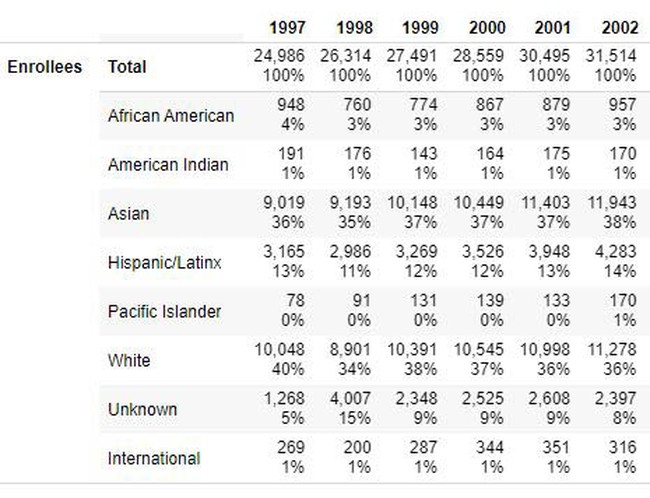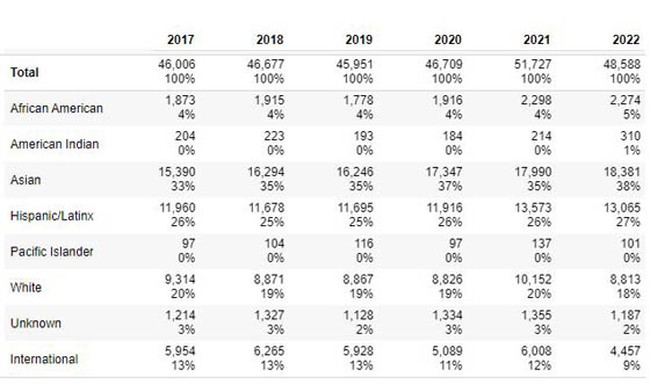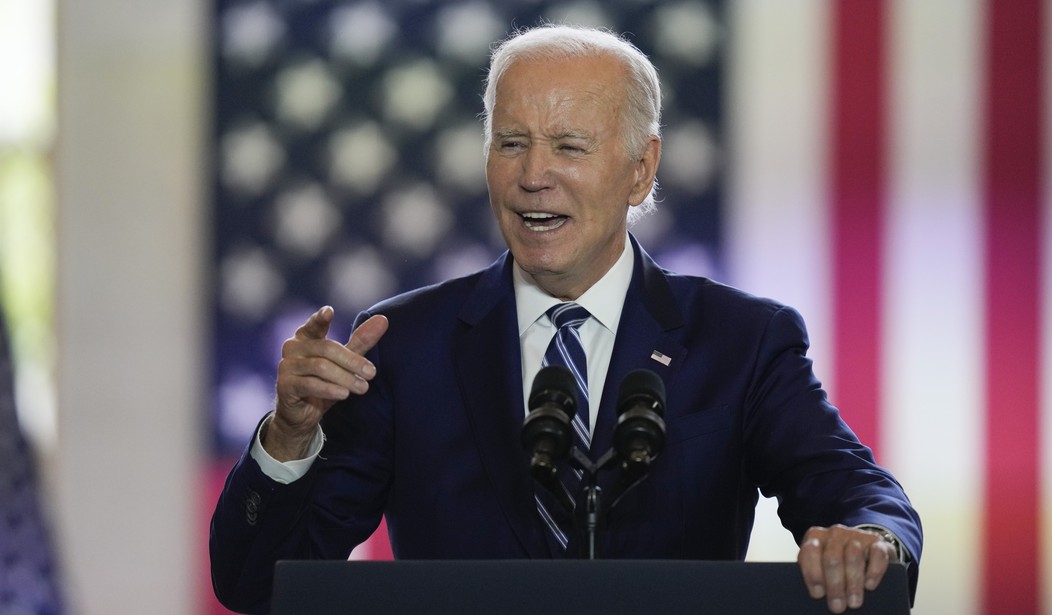As you might expect, the left is not very happy about the Supreme Court’s affirmative action decision today. Civil Rights groups were quick to denounce it. The NAACP labeled it “hate-inspired.”
Today the Supreme Court has bowed to the personally held beliefs of an extremist minority. We will not allow hate-inspired people in power to turn back the clock and undermine our hard-won victories. The tricks of America’s dark past will not be tolerated. Let me be clear – affirmative action exists because we cannot rely on colleges, universities, and employers to enact admissions and hiring practices that embrace diversity, equity and inclusion.
The NAACP National Director of Youth & College released his own statement calling this a dark day in America.
This is a dark day in America. Affirmative action has been a beacon of hope for generations of Black students. It stood as a powerful force against the insidious poison of racism and sexism, aiming to level the playing field and provide a fair shot at a high-quality education for all.
This is of course exactly the opposite of what affirmative action did. It did not level the playing field, it tilted it in favor of minority applicants in order to level the outcome. Rev. Al Sharpton also issued a statement.
“Affirmative action was a commonly embraced policy because it served as a check on an admission process that was rife with racism, nepotism, and favoritism for generations,” Sharpton said. “The reality is race plays a factor in admissions, from pre-K to post-doctorate, and institutions just saw their best tool for fairness outlawed.”
Elected officials quickly followed with statements adopting a similar tone. Sen. Schumer called it a “giant roadblock” in the march toward racial justice.
The Supreme Court's ruling put a giant roadblock in America’s march toward racial justice.
The consequences will be felt immediately as students of color will face an admission cycle next year with fewer opportunities.
These negative consequences could continue for generations. pic.twitter.com/4ITfj9nry9
— Chuck Schumer (@SenSchumer) June 29, 2023
Both Barack and Michelle Obama issued statements. Barack’s in particular feels a little lackluster compared to some of the others.
Affirmative action was never a complete answer in the drive towards a more just society. But for generations of students who had been systematically excluded from most of America’s key institutions—it gave us the chance to show we more than deserved a seat at the table.
In the… https://t.co/Kr0ODATEq3
— Barack Obama (@BarackObama) June 29, 2023
By contrast, President Biden vowed today’s decision would not be the last word.
Our colleges are stronger when they are racially diverse. And America is stronger because we are tapping into our full range of talent.
Today's Supreme Court decision is not the last word.
— President Biden (@POTUS) June 29, 2023
Biden was also asked today if this was a “rogue court” to which he paused and said it was “not a normal court.”
REPORTER: "Is this a rogue court?"
BIDEN: "This is not a normal court." pic.twitter.com/ABu2CnvG7f
— Townhall.com (@townhallcom) June 29, 2023
The reporter who asked that question was CNN’s Arlette Saenz. Moving on, you won’t be surprised that AOC is outraged.
If SCOTUS was serious about their ludicrous “colorblindness” claims, they would have abolished legacy admissions, aka affirmative action for the privileged.
70% of Harvard’s legacy applicants are white. SCOTUS didn’t touch that – which would have impacted them and their patrons.
— Alexandria Ocasio-Cortez (@AOC) June 29, 2023
To be fair, she has a point about legacy admissions which give and advantage to people whose parents attended. It’s distinct from affirmative action but like affirmative action it’s an unearned advantage.
CNN had Cornel West on today to talk about the decision. I think Dana Bash did a pretty good job of asking him to reply to viewpoints arguing the other side, including Clarence Thomas’ concurrence in the case. Your mileage may vary but I don’t think West really engaged any of the arguments. He just kept repeating the claim that this is Jim Crow Jr.
What a sad day! This is another attack on Black people! Let us prepare for a more intense fightback! Here is my statement on Affirmative Action on my sister Dana Bash’s CNN show! #AffirmativeAction pic.twitter.com/AqwbZ3r4VW
— Cornel West (@CornelWest) June 29, 2023
Elie Mystal authored a piece for the Nation titled “The Supreme Court Has Killed Affirmative Action. Mediocre Whites Can Rest Easier.” One of the arguments he makes, which I’ve seen a lot lately, is that we already know the outcome of this will be bad for black Americans because affirmative action was banned in California decades ago.
Getting rid of affirmative action will neither require schools to admit more AAPI students nor force them to weigh so-called “merit-based” factors more heavily. In California, which ended its affirmative action policies over 25 years ago, the studies show that, without affirmative action, Black enrollment plummets, Latino enrollment plummets, AAPI enrollment goes up a little bit, and whites flood the remaining opportunities.
Of course, boosting white opportunities at the expense of Black and Latino students is what conservatives like Ed Blum want. They’ve just managed to convince a minority of AAPI parents that making the world easier for Varsity Blues wealthy white parents will also trickle down to their kids. The problem with this pro-white policy goal is that it’s nowhere near a constitutional argument.
That link goes to an LA Times story that doesn’t actually support what Mystal is claiming it does.
Initially, Proposition 209 drastically reduced diversity at UC’s most competitive campuses. In 1998, the first admissions year affected by the ban, the number of California Black and Latino first-year students plunged by nearly half at UCLA and UC Berkeley…
California State University’s 23 campuses did not lose nearly as many Black and Latino students as UC did, and the system’s enrollment today nearly fully reflects the state’s diversity. Among its 422,391 undergraduates in fall 2021, 47% are Latino, 21% white, 16% Asian and 4% Black.
That closely mirrors the demographics of the state’s 217,910 California high school students who met UC and CSU eligibility standards in 2020-21: 45% are Latino, 26% white, 16% Asian and 4% Black…
Progress has been striking at UCLA, where the affirmative action ban hit particularly hard and swift. By 1998, the number of Black and Latino students in the campus’ first-year class of Californians had plummeted by nearly half.
But by 2021, UCLA’s California first-year class included more Black students — 346, or 7.6 % — than their 1995 numbers of 259, or 7.3%. The same is true for Latino students, whose numbers grew to 1,185, or 26%, from 790, or 22.4%, during that same period.
The key word in that excerpt is “initially.” Because contrary to Mystal’s claim that ending affirmative action in California meant black and Latino enrollment plummeted and whites “flood[ed] the remaining opportunities” what actually happened is that all races saw declines in 1998 because there was a jump in “unknown” race applicants and admissions. You can see the admissions data for the UC system here. To simplify things I’m only looking at enrollees.

The year 1998 is the second column from the left and that was the first year the affirmative action ban in California took effect (though it prop 209 passed in 1996). In 1998 the percentage of African Americans went from 4% to 3%. Asians dropped from 36% to 35%. Hispanics dropped from 13% to 11% and whites dropped from 40% to 34%. But if every group dropped both in percentages and real numbers how did the total number of enrollees jump by nearly 1,500 students? The answer is the the 2nd to last row labeled “unknown.” The number of enrollees of unknown race jumped from 5% in 1997 to 15% in 1998.
I’m not actually certain what accounts for this. My guess is that 10% more students declined to state their race on their applications that year, possibly because of all the focus on the end of affirmative action. Obviously all of those students still had a race and given that the decline in white students was the sharpest it’s possible many of those students who declined to identify themselves were white. In any case, what we can’t take from this data is what Mystal claimed. It does not show that black and Latino enrollment plummeted while Asian enrollment went up (it didn’t) and whites flooded the open opportunities. At best, what it shows is unclear.
Eventually the number of students listed as unknown settled down and by that point most groups had bounced back to 1997 rates of admission, except for whites. By 2007, African Americans are back to 4% of enrollees. Asians, who were at 36% in 1997 are now at 40%. Hispanics who were at 13% in 1997 are at 17% and whites who were at 40% in 1997 are down to 31% by 2007.

Finally, here’s the most recent data for the past six years. Black enrollment last year hit 5%. Asian enrollment is at 38%. Hispanic enrollment is now 27% and white enrollment is 18%.

Compare that to what the LA Times said were the percentages of eligible students in California: “45% are Latino, 26% white, 16% Asian and 4% Black.” So Asians are being admitted at more than double their percentage of the eligible population and whites and Hispanics are both underperforming relative to their share of the population. Nevertheless, since the end of affirmative action in California the percentage of enrolled Hispanics has doubled and the percentage of enrolled whites has been cut in half (compare 1997 to 2022).
Does this sound at all like the white supremacy power grab that Elie Mystal described?
My point is that for all the hot pixels flying today the best evidence we have from California’s UC system suggests that the end of affirmative action does not spell doom for black or Hispanic students who, thanks to millions spent on targeted recruiting efforts, do fine without race conscious admissions.







